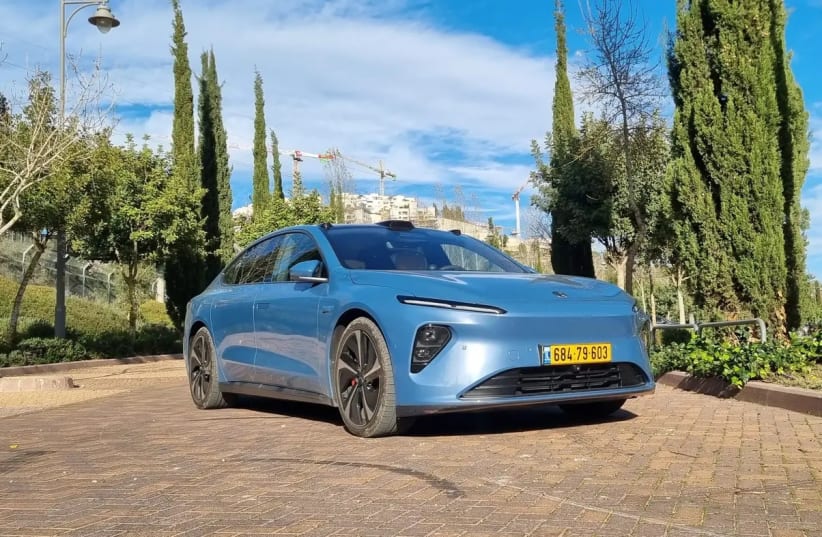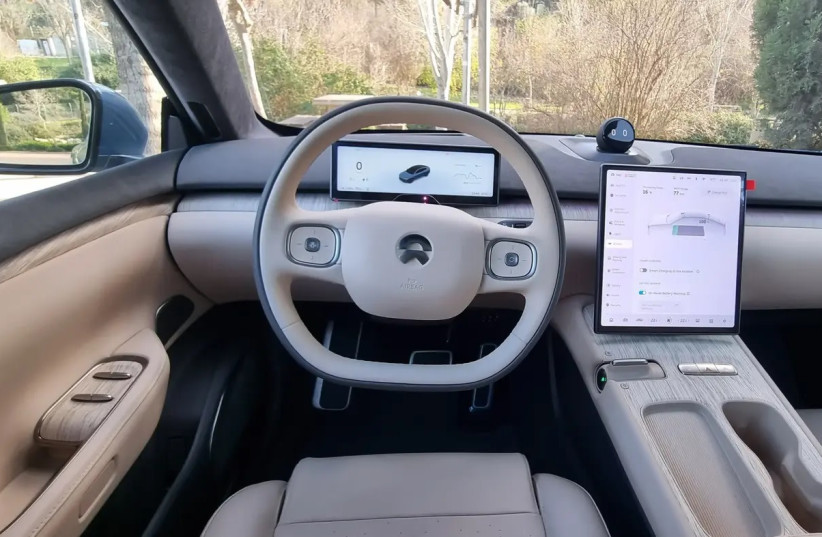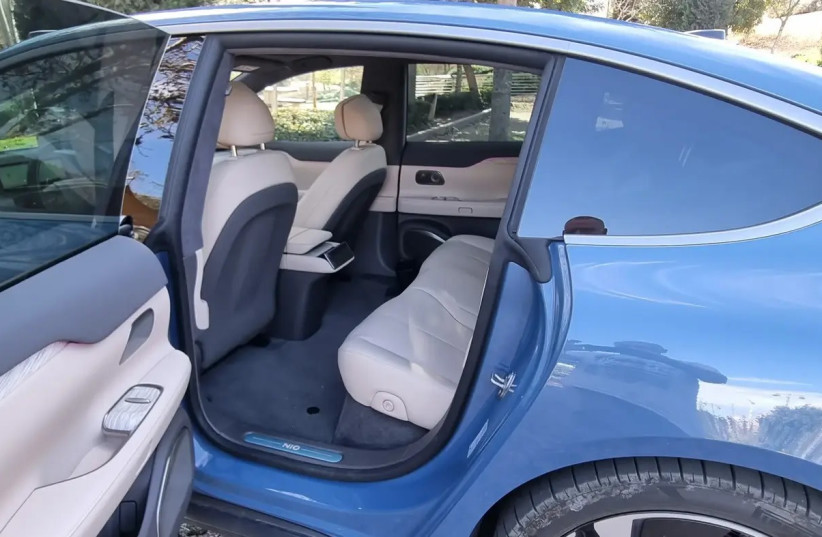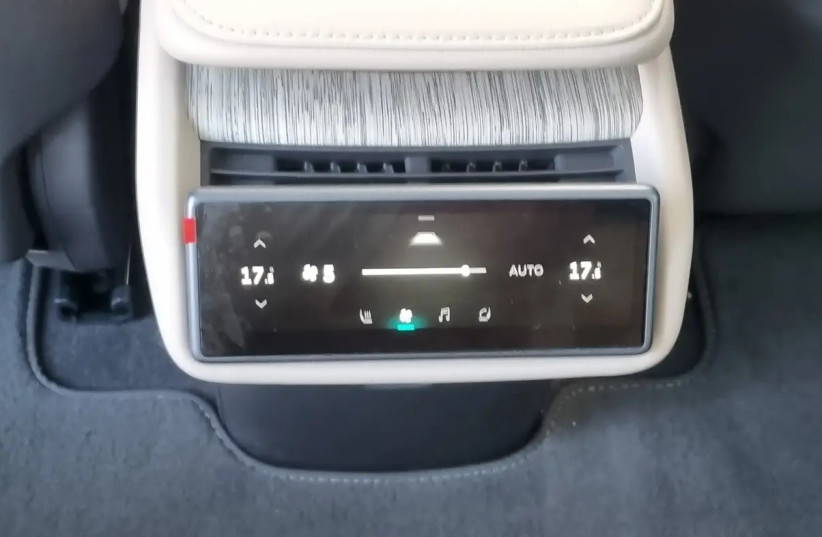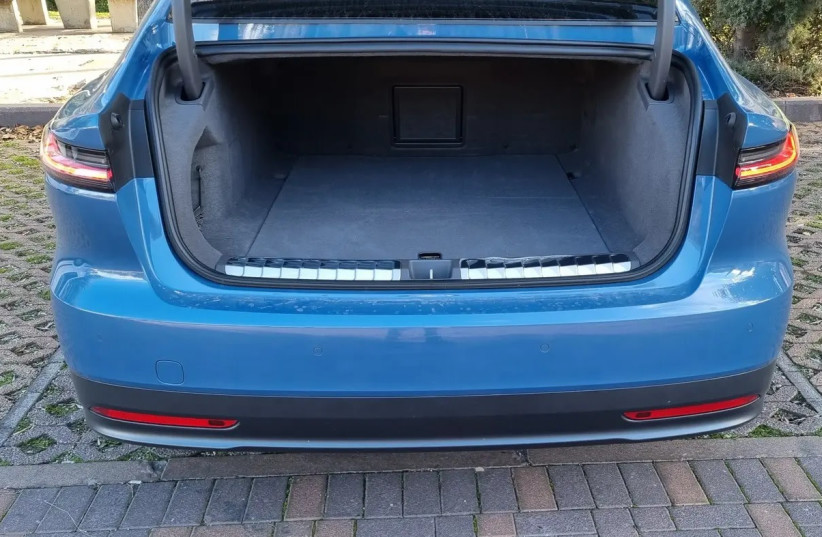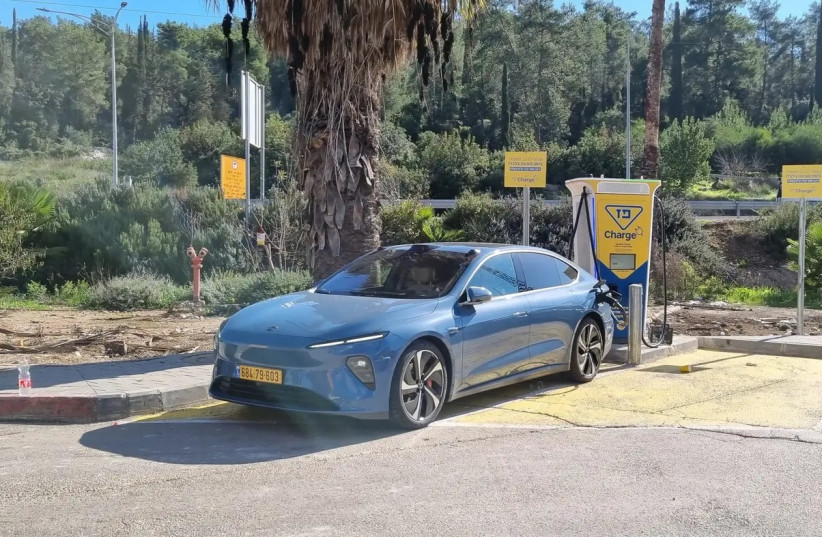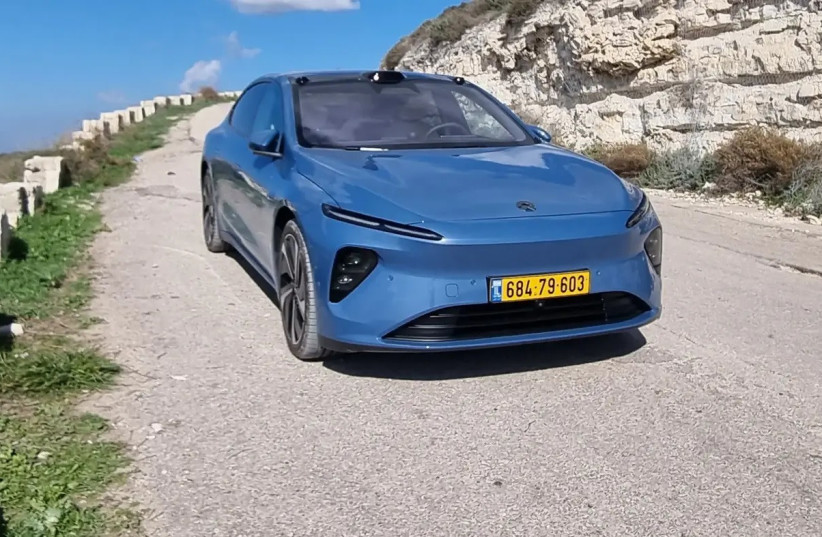Price: NIS 499,000Competitors: Mercedes EQE, BMW i5, Tesla Model S, Zeekr 001Liked: Performance, comfort, potential for battery swappingDidn't like: Small charging compartment, human engineering, charging speedRating: 8/10
The NIO ET7 has three protrusions at the roof's edge, right at the front. In the middle, one with Lidar (laser scanner), and on the sides cameras. It reminds a bit of an American truck with all the big lights on the roof, which is somewhat amusing when it comes to a new luxurious Chinese car. But it's also a badge of honor: in the end, it is the ideal placement for these sensors, as high as possible, for improving visibility. NIO did what's right, not necessarily what's prettiest. Spoiler: it's also felt for the better in driving.
The Chinese NIO, established just nine years ago by the serial tech entrepreneur William Li, followed Tesla's model as a technology company for producing electric vehicles. Unlike Elon Musk, Li doesn't deal with space launches, but his company already has 9 models in production compared to Tesla's 5. Three of them are already marketed in Israel, the ET7 sedan which we drove, alongside the ET5 in the executives' category and the ES8 as a 7-seater electric crossover. Two more crossovers, ES6 and ES7, will be launched in the coming months.
The importer is Delta Motors, an importer of Mazda, Ford, and BMW, and in a unique way, it does so through parallel importation via the NIO agent in Norway. Delta will also build in the country initially two battery swapping stations, similar to those NIO installed more than 1,000 in China and Europe, allowing for battery replacement in just two minutes. Remember the idea of Shai Agassi and Better Place? The Chinese implemented it in small, cheap, and more efficient stations, treating electric cars like gasoline cars in terms of refueling times. This could be an interesting sales advantage when such a chain exists here, as not every driver has the ability to charge the car at home or at work.
Meanwhile, the ET7 needs to speak for itself. Shall we start?
Design: Apart from the sensors on the roof, it's another Chinese electric sedan, following all the genre rules designed to build an aerodynamic car. With a length of 5.1 meters, width of 1.99 meters, height of 1.51 meters, and a huge wheelbase of 3.96 meters, it's a large car with a lot of presence but not of the aggressive type. Half a million shekels, but modest.
Passenger compartment: Here too, there is some restraint, far from the lavishness we have seen in some other Chinese luxury brands, making extensive use of natural materials like wood and leather. There is a 12.8-inch multimedia screen and operation, and also a digital instrument panel (10.2 inches), again unlike Tesla and other smart brands that cram all driving and operation into one screen.
On the other hand, there is excessive reliance on physical control buttons, everything is done from the screen, which requires problematic navigation while driving between screens. Luckily, there is efficient voice control through the personal assistant NOMI, otherwise, I wouldn't have been able to open the charging hatch in my life (why does it have to be electric at all, and not open at a touch?).
Like in a Tesla, and like with Elon Musk, there is no cover for the panoramic glass roof, which is expected to be troublesome in the summer. Not every innovation needs to be copied. The quality is great except for an application installed in the country to allow use on Android Auto and Apple CarPlay, suffering from a laggy display.
The seating is very comfortable, both in the front and rear. It's a shame that in a car of this size, there is only a 363-liter cargo space, like some sort of supermini car at a quarter of the price.
Equipment: choice between 20 and 21-inch wheels, upholstery from natural and recycled materials, a panoramic roof, a stereo system with 23 speakers, 10.2-inch cluster screens and a 12.8-inch multimedia screen, with an additional display for the driver and a 6.6-inch rear screen, allowing passengers to control lighting, seat operation, and stereo. There is also massage in the rear outer seats, heating and cooling, an aromatherapy system, and even an electrically retractable towing hitch as standard.
Safety: The list is long and includes autonomous emergency braking in forward and reverse driving, adaptive cruise control, alert for a vehicle in a dead zone, lane keeping and deviation correction, automatic high beam, alert for door opening when a vehicle is approaching, and more. The ET7 received the maximum score of 5 out of 5 stars in the stricter new European crash test formula last year.
Engine and Performance: With two engines producing a combined 653 horsepower and also providing dual drive, this is one of the most powerful saloon cars in the country, even more powerful than some sports cars, including the Chevrolet Corvette and Porsche 911. The performance is excellent, even in eco-driving mode that sacrifices acceleration for range improvement, with rapid accelerations that can cause dizziness in Sport Plus mode (0-100 km/h in 3.8 seconds in official data). It can overtake anything anywhere allowed.
On the other hand, the race to 0-100 is somewhat distant: these performances are much greater than the average driver, as can be seen in the accident data of electric vehicles. NIO offers an unusual feature, where choosing the Eco mode for power saving allows setting the acceleration pace: sticking with the original figure, slowing down to 5.9 seconds, 7.9 seconds, 9.9 seconds, or 13.5 seconds, which are really exaggerated on the other side. Perhaps such a choice should be offered regardless of energy saving, even when driven by a less experienced driver.
Charging range: A 100 kWh battery officially guarantees 580 km with 20-inch wheels and 505 with 21-inch wheels, which were installed in the test vehicle. With moderate driving most of the time, we achieved 450 km, still decent. When the battery replacement chain is in place, it will truly be revolutionary. In the meantime, fast charging is possible at a relatively slow maximum power output of only 125 kW. Slow charging is possible at a standard 11 kW, while some competitors already offer slow charging at 22 kW.
Comfort and behavior: The ride is very quiet, and the comfort of the journey is excellent thanks to the adaptive air suspension. Road behavior is very good, with high grip and very little tendency to roll.
But despite the excellent performance, this is not a sports sedan, without feedback from the steering. The braking could have been more responsive, especially for a vehicle with such performance.
The bottom line: Half a million shekels is a lot of money for an unknown Chinese brand, even one that arouses great interest worldwide. The ET7 justifies the high price tag with its capabilities, equipment, and performance level. Human engineering will still make it difficult for upscale and veteran customers to switch to it, but it is preferable to that of Tesla, for example.
Unlike some even more expensive Chinese cars, it is imported by a BMW importer and promises a high level of service: the price includes free maintenance for 5 years, a 24/7 service center, and cars will be collected from customers who receive a replacement NIO while their vehicle is in the workshop. Each customer will be accompanied by a personal service manager throughout the ownership of the vehicle.
The high price is relative: this NIO is equipped and cheaper by NIS 100,000 from the BMW i5, Mercedes EQE, and Tesla Model S base models, and it is significantly faster than the German cars, for example. It's a bit like getting a price on an old dress in a store in the town square, but there's a half-million shekel salon car that can be defined as a 'deal' - that's the car.
Technical details: NIO ET7Engine: Two electric engines, 653 horsepower, 86.6 kgmTransmission: Automatic, direct drive. Dual-driveBattery: 100 kWhMaximum fast charging speed: 125 kW
Dimensions:Length (m): 5.1Width (m): 1.99Height (m): 1.51Wheelbase (m): 3.06Weight: 2,380 kg
Performance (manufacturer):0-100 km/h (seconds): 3.8Maximum speed (km/h): 200 km/hCombined range: 505 kmTest range: 450 km
Safety:European crash test: 5 out of 5 stars (as of 2023)Active safety: Autonomous emergency braking in forward and reverse driving, adaptive cruise control, lane-keeping assist, off-road vehicle warning, door opening warning as a vehicle approaches, automatic high beam
Warranty:3 years or 100,000 km for the car, 8 years or 160,000 km for the battery
